formerly eScholarship Editions


|
|
|
|
Your request for similar items found 20 book(s). | Modify Search | Displaying 1 - 20 of 20 book(s) | |
| 1. | 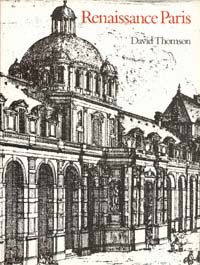 | Title: Renaissance Paris: architecture and growth, 1475-1600 Author: Thomson, David 1912- Published: University of California Press, 1985 Subjects: Art | Architecture Publisher's Description: In the modern literature on Renaissance art and architecture, Paris has often been considered the Cinderella of the European capitals. The prestigious buildings that were erected soon after François I decided in 1528 to make Paris his residence have long since been lost. Thomson, however, restores t . . . [more] Similar Items |
| 2. | 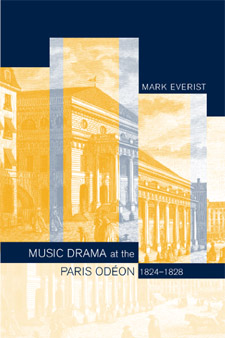 | Title: Music drama at the Paris Odéon, 1824-1828 Author: Everist, Mark Published: University of California Press, 2002 Subjects: Music | Musicology | Opera | French Studies | European History Publisher's Description: Parisian theatrical, artistic, social, and political life comes alive in Mark Everist's impressive institutional history of the Paris Odéon, an opera house that flourished during the Bourbon Restoration. Everist traces the complete arc of the Odéon's short but highly successful life from ascent to triumph, decline, and closure. He outlines the role it played in expanding operatic repertoire and in changing the face of musical life in Paris. Everist reconstructs the political power structures that controlled the world of Parisian music drama, the internal administration of the theater, and its relationship with composers and librettists, and with the city of Paris itself. His rich depiction of French cultural life and the artistic contexts that allowed the Odéon to flourish highlights the benefit of close and innovative examination of society's institutions. [brief] Similar Items |
| 3. | 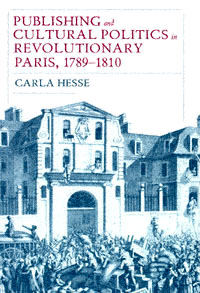 | Title: Publishing and cultural politics in revolutionary Paris, 1789-1810 Author: Hesse, Carla Published: University of California Press, 1991 Subjects: History | European History | Print Media | French Studies Publisher's Description: In 1789 French revolutionaries initiated a cultural experiment that radically transformed the most basic elements of French literary civilization - authorship, printing, and publishing. In a panoramic analysis, Carla Hesse tells how the Revolution shook the Parisian printing and publishing world from top to bottom, liberating the trade from absolutist institutions and inaugurating a free-market exchange of ideas.Historians and literary critics have traditionally viewed the French Revolution as a catastrophe for French literary culture. Combing through extensive new archival sources, Hesse finds instead that revolutionaries intentionally dismantled the elite literary civilization of the Old Regime to create unprecedented access to the printed word. Exploring the uncharted terrains of popular fiction, authors' rights, and literary life under the Terror, Carla Hesse offers a new perspective on the relationship between democratic revolutions and modern cultural life. [brief] Similar Items |
| 4. | 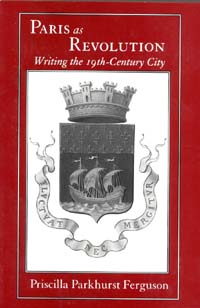 | Title: Paris as revolution: writing in the nineteenth-century city Author: Ferguson, Priscilla Parkhurst Published: University of California Press, 1997 Subjects: Literature | Social Theory | European Literature | Literary Theory and Criticism | European History | French Studies Publisher's Description: In nineteenth-century Paris, passionate involvement with revolution turned the city into an engrossing object of cultural speculation. For writers caught between an explosive past and a bewildering future, revolution offered a virtuoso metaphor by which the city could be known and a vital principle through which it could be portrayed.In this engaging book, Priscilla Ferguson locates the originality and modernity of nineteenth-century French literature in the intersection of the city with revolution. A cultural geography, Paris as Revolution "reads" the nineteenth-century city not in literary works alone but across a broad spectrum of urban icons and narratives. Ferguson moves easily between literary and cultural history and between semiotic and sociological analysis to underscore the movement and change that fueled the powerful narratives defining the century, the city, and their literature. In her understanding and reconstruction of the guidebooks of Mercier, Hugo, Vallès, and others, alongside the novels of Flaubert, Hugo, Vallès, and Zola, Ferguson reveals that these works are themselves revolutionary performances, ones that challenged the modernizing city even as they transcribed its emergence. [brief] Similar Items |
| 5. | 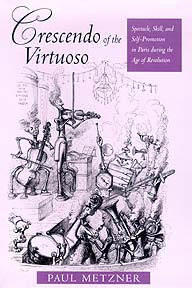 | Title: Crescendo of the virtuoso: spectacle, skill, and self-promotion in Paris during the Age of Revolution Author: Metzner, Paul 1952- Published: University of California Press, 1998 Subjects: History | European History | French Studies | European Studies Publisher's Description: During the Age of Revolution, Paris came alive with wildly popular virtuoso performances. Whether the performers were musicians or chefs, chess players or detectives, these virtuosos transformed their technical skills into dramatic spectacles, presenting the marvelous and the outré for spellbound audiences. Who these characters were, how they attained their fame, and why Paris became the focal point of their activities is the subject of Paul Metzner's absorbing study. Covering the years 1775 to 1850, Metzner describes the careers of a handful of virtuosos: chess masters who played several games at once; a chef who sculpted hundreds of four-foot-tall architectural fantasies in sugar; the first police detective, whose memoirs inspired the invention of the detective story; a violinist who played whole pieces on a single string. He examines these virtuosos as a group in the context of the society that was then the capital of Western civilization. [brief] Similar Items |
| 6. |  | Title: The rise of the Paris red belt Author: Stovall, Tyler Edward Published: University of California Press, 1990 Subjects: History | European History | Social Science | French Studies Publisher's Description: From 1920 until the present, the working-class suburbs of Paris, known as the Red Belt, have constituted the heart of French Communism, providing the Party not only with its most solid electoral base but with much of its cultural identity as well. Focusing on the northeastern suburb of Bobigny, Stovall explores the nature of working-class life and politicization as he skillfully documents how this unique region and political culture came into being. The Rise of the Paris Red Belt reveals that the very process of urban development in metropolitan Paris and the suburbs provided the most important opportunities for the local establishment of Communist influence.The rapid increase in Paris' suburban population during the early twentieth century outstripped the development of the local urban infrastructure. Consequently, many of these suburbs, often represented to their new residents as charming country villages, soon degenerated into suburban slums. Stovall argues that Communists forged a powerful political block by mobilizing the disillusionment and by improving some of the worst aspects of suburban life.As a social history of twentieth-century France, The Rise of the Paris Red Belt calls into question traditional assumptions about the history of both French Communism and the French working-class. It suggests that those interested in working-class politics, especially in the twentieth century, should consider the significance of residential and consumer issues as well as those relating to the workplace. It also suggests that urban history and urban development should not be considered autonomous phenomena, but rather expressions of class relations. The Rise of the Paris Red Belt brings to life a world whose citizens, though often overlooked, are nonetheless the history of modern France. [brief] Similar Items |
| 7. | 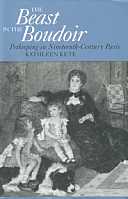 | Title: The beast in the boudoir: petkeeping in nineteenth-century Paris Author: Kete, Kathleen Published: University of California Press, 1994 Subjects: History | European History | French Studies | European Studies Publisher's Description: Kathleen Kete's wise and witty examination of petkeeping in nineteenth-century Paris provides a unique window through which to view the lives of ordinary French people. She demonstrates how that cliché of modern life, the family dog, reveals the tensions that modernity created for the Parisian bourgeoisie.Kete's study draws on a range of literary and archival sources, from dog-care books to veterinarians's records to Dumas's musings on his cat. The fad for aquariums, attitudes toward vivisection, the dread of rabies, the development of dog breeding - all are shown to reflect the ways middle-class people thought about their lives. Petkeeping, says Kete, was a way to imagine a better, more manageable version of the world - it relieved the pressures of contemporary life and improvised solutions to the intractable mesh that was post-Enlightenment France. The faithful, affectionate family dog became a counterpoint to the isolation of individualism and lack of community in urban life. By century's end, however, animals no longer represented the human condition with such potency, and even the irascible, autonomous cat had been rehabilitated into a creature of fidelity and affection.Full of fascinating details, this innovative book will contribute to the way we understand culture and the creation of class. [brief] Similar Items |
| 8. | 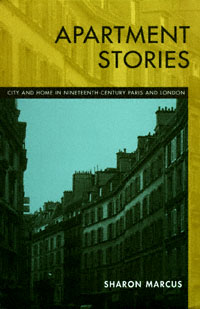 | Title: Apartment stories: city and home in nineteenth-century Paris and London Author: Marcus, Sharon 1966- Published: University of California Press, 1999 Subjects: Literature | European History | Urban Studies | Women's Studies Publisher's Description: In urban studies, the nineteenth century is the "age of great cities." In feminist studies, it is the era of the separate domestic sphere. But what of the city's homes? In the course of answering this question, Apartment Stories provides a singular and radically new framework for understanding the urban and the domestic. Turning to an element of the cityscape that is thoroughly familiar yet frequently overlooked, Sharon Marcus argues that the apartment house embodied the intersections of city and home, public and private, and masculine and feminine spheres.Moving deftly from novels to architectural treatises, legal debates, and popular urban observation, Marcus compares the representation of the apartment house in Paris and London. Along the way, she excavates the urban ghost tales that encoded Londoners' ambivalence about city dwellings; contends that Haussmannization enclosed Paris in a new regime of privacy; and locates a female counterpart to the flâneur and the omniscient realist narrator - the portière who supervised the apartment building. [brief] Similar Items |
| 9. | 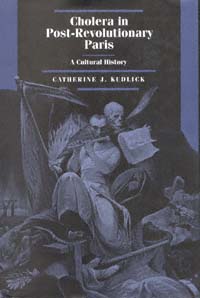 | Title: Cholera in post-revolutionary Paris: a cultural history Author: Kudlick, Catherine Jean Published: University of California Press, 1996 Subjects: History | European History | Medicine Publisher's Description: Cholera terrified and fascinated nineteenth-century Europeans more than any other modern disease. Its symptoms were gruesome, its sources were mysterious, and it tended to strike poor neighborhoods hardest. In this insightful cultural history, Catherine Kudlick explores the dynamics of class relations through an investigation of the responses to two cholera epidemics in Paris.While Paris climbed toward the height of its urban and industrial growth, two outbreaks of the disease ravaged the capital, one in 1832, the other in 1849. Despite the similarity of the epidemics, the first outbreak was met with general frenzy and far greater attention in the press, popular literature and personal accounts, while the second was greeted with relative silence. Finding no compelling evidence for improved medical knowledge, changes in the Paris environment, or desensitization of Parisians, Kudlick looks to the evolution of the French revolutionary tradition and the emergence of the Parisian bourgeoisie for answers. [brief] Similar Items |
| 10. | 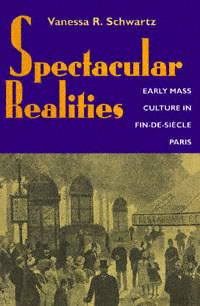 | Title: Spectacular realities: early mass culture in fin-de-siècle Paris Author: Schwartz, Vanessa R Published: University of California Press, 1998 Subjects: History | French Studies | European History | European Literature | Women's Studies | Film Publisher's Description: During the second half of the nineteenth century, Paris emerged as the entertainment capital of the world. The sparkling redesigned city fostered a culture of energetic crowd-pleasing and multi-sensory amusements that would apprehend and represent real life as spectacle.Vanessa R. Schwartz examines the explosive popularity of such phenomena as the boulevards, the mass press, public displays of corpses at the morgue, wax museums, panoramas, and early film. Drawing on a wide range of written and visual materials, including private and business archives, and working at the intersections of art history, literature, and cinema studies, Schwartz argues that "spectacular realities" are part of the foundation of modern mass society. She refutes the notion that modern life produced an unending parade of distractions leading to alienation, and instead suggests that crowds gathered not as dislocated spectators but as members of a new kind of crowd, one united in pleasure rather than protest. [brief] Similar Items |
| 11. | 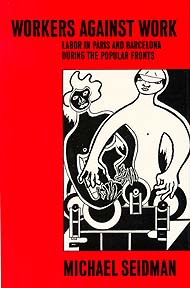 | Title: Workers against work: labor in Paris and Barcelona during the popular fronts Author: Seidman, Michael (Michael M.) Published: University of California Press, 1990 Subjects: History | European History | Social Science | French Studies | Labor Studies Publisher's Description: Why did a revolution occur in Spain and not in France in 1936? This is the key question Michael Seidman explores in his important new study of the relations between industrial capitalists and working-class movements in the early part of this century. In a comparative analysis of Paris during the Popular Front and Barcelona during the Spanish Revolution, Seidman examines the strengths and weaknesses of the bourgeoisie in these two cities and traces workers' resistance to, and acceptance of, work. His emphasis on the continuing refusal to work challenges the dominant views of labor historiography and contributes to a general theory of revolutionary workers' control.Seidman illuminates three crucial issues that have broad implications for the history of the twentieth century. His comparative approach delineates the nature of class confrontation in societies with different kinds of bourgeoisies or capitalist elites. He also shows how the differences between these elites affected the labor movements in France and Spain, and he demonstrates how rank-and-file workers actually responded to the revolutionary situation in Barcelona and to the advent of the reformist government in Paris.A social history of acceptance and rejection of work, this book offers a new conceptualization of wage earners and a critique of work itself. [brief] Similar Items |
| 12. | 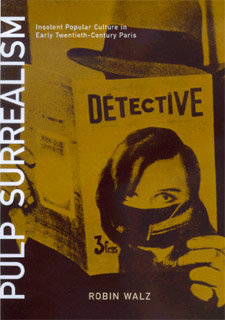 | Title: Pulp surrealism: insolent popular culture in early twentieth-century Paris Author: Walz, Robin 1957- Published: University of California Press, 2000 Subjects: History | French Studies | Comparative Literature Publisher's Description: In addition to its more well known literary and artistic origins, the French surrealist movement drew inspiration from currents of psychological anxiety and rebellion running through a shadowy side of mass culture, specifically in fantastic popular fiction and sensationalistic journalism. The provocative nature of this insolent mass culture resonated with the intellectual and political preoccupations of the surrealists, as Robin Walz demonstrates in this fascinating study. Pulp Surrealism weaves an interpretative history of the intersection between mass print culture and surrealism, re-evaluating both our understanding of mass culture in early twentieth-century Paris and the revolutionary aims of the surrealist movement. Pulp Surrealism presents four case studies, each exploring the out-of the-way and impertinent elements which inspired the surrealists. Walz discusses Louis Aragon's Le paysan de Paris, one of the great surrealist novels of Paris. He goes on to consider the popular series of Fantômes crime novels; the Parisan press coverage of the arrest, trial, and execution of mass-murderer Landru; and the surrealist inquiry "Is Suicide a Solution?", which Walz juxtaposes with reprints of actual suicide faits divers (sensationalist newspaper blurbs). Although surrealist interest in sensationalist popular culture eventually waned, this exploration of mass print culture as one of the cultural milieux from which surrealism emerged ultimately calls into question assumptions about the avant-garde origins of modernism itself. [brief] Similar Items |
| 13. | 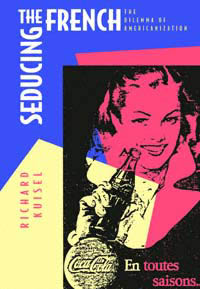 | Title: Seducing the French: the dilemma of Americanization Author: Kuisel, Richard F Published: University of California Press, 1993 Subjects: History | European History | Popular Culture | French Studies Publisher's Description: When Coca-Cola was introduced in France in the late 1940s, the country's most prestigious newspaper warned that Coke threatened France's cultural landscape. This is one of the examples cited in Richard Kuisel's engaging exploration of France's response to American influence after World War II. In analyzing early French resistance and then the gradual adaptation to all things American that evolved by the mid-1980s, he offers an intriguing study of national identity and the protection of cultural boundaries.The French have historically struggled against Americanization in order to safeguard "Frenchness." What would happen to the French way of life if gaining American prosperity brought vulgar materialism and social conformity? A clash between American consumerism and French civilisation seemed inevitable.Cold War anti-Communism, the Marshall Plan, the Coca-Cola controversy, and de Gaulle's efforts to curb American investment illustrate ways that anti-Americanization was played out. Kuisel also raises issues that extend beyond France, including the economic, social, and cultural effects of the Americanized consumer society that have become a global phenomenon.Kuisel's lively account reaches across French society to include politicians, businessmen, trade unionists, Parisian intelligentsia, and ordinary citizens. The result reveals much about the French - and about Americans. As Euro Disney welcomes travellers to its Parisian fantasyland, and with French recently declared the official language of France (to defend it from the encroachments of English), Kuisel's book is especially relevant. [brief] Similar Items |
| 14. | 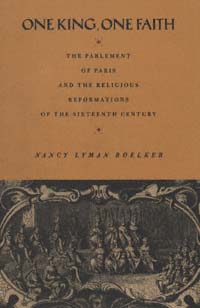 | Title: One king, one faith: the Parlement of Paris and the religious reformations of the sixteenth century Author: Roelker, Nancy L. (Nancy Lyman) Published: University of California Press, 1996 Subjects: History | European History | Christianity | European Studies | French Studies Publisher's Description: This book, the culmination of a lifelong career in French history, tackles head-on the central question of the French Religious Wars: Why did France prove so consistently hostile and resistant to Protestantism? Distinguished scholar Nancy Lyman Roelker claims that what ultimately motivated the passion and violence of the civil wars was religion. She demonstrates that not only the body politic but also the body social was defined by Gallican Catholicism.Roelker underscores the role the Parlement played in shaping and safeguarding the social, as well as the political, order. Her study is based on extensive research in the correspondence, memoirs, and tracts of mainstream Catholic magistrates as well as dissenters. It creates an overview of the mentalitè s of the Parlement, analyzes religious attitudes toward major events of the period, and examines the Parlement's role in the triumph of Henri IV. Along the way, it sheds light on the inner workings of the Parlement and other political institutions, on social structures, and on collective ideas. And above all, this distinguished work brilliantly illuminates the role of religion in society and the state. It will be the definitive work on the subject for many years to come. [brief] Similar Items |
| 15. | 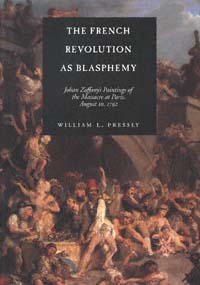 | Title: The French Revolution as blasphemy: Johan Zoffany's paintings of the massacre at Paris, August 10, 1792 Author: Pressly, William L 1944- Published: University of California Press, 1999 Subjects: Art | Art History | European History | French Studies Publisher's Description: William Pressly presents for the first time a close analysis of two important, neglected paintings, arguing that they are among the most extraordinary works of art devoted to the French Revolution. Johan Zoffany's Plundering the King's Cellar at Paris, August 10, 1792 , and Celebrating over the Bodies of the Swiss Soldiers , both painted in about 1794, represent events that helped turn the English against the Revolution.Pressly places both paintings in their historical context - a time of heightened anti-French hysteria - and relates them to pictorial conventions: contemporary history painting, the depiction of urban mobs in satiric and festival imagery, and Hogarth's humorous presentation of modern moral subjects, all of which Zoffany adopted and reinvented for his own purposes. Pressly relates the paintings to Zoffany's status as a German-born Catholic living in Protestant England and to Zoffany's vision of revolutionary justice and the role played by the sansculottes, women, and blacks. He also examines the religious dimension in Zoffany's paintings, showing how they broke new ground by conveying Christian themes in a radically new format.Art historians will find Pressly's book of immense value, as will cultural historians interested in religion, gender, and race. [brief] Similar Items |
| 16. | 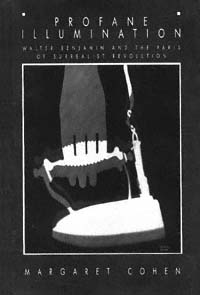 | Title: Profane illumination: Walter Benjamin and the Paris of surrealist revolution Author: Cohen, Margaret Published: University of California Press, 1993 Subjects: German Studies | Philosophy | Literary Theory and Criticism Publisher's Description: Margaret Cohen's encounter with Walter Benjamin, one of the twentieth century's most influential cultural and literary critics, has produced a radically new reading of surrealist thought and practice. Cohen analyzes the links between Breton's surrealist fusion of psychoanalysis and Marxism and Benjamin's post-Enlightenment challenge to Marxist theory. She argues that Breton's surrealist Marxism played a formative role in shaping postwar French intellectual life and is of continued relevance to the contemporary intellectual scene. [brief] Similar Items |
| 17. | 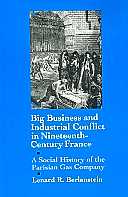 | Title: Big business and industrial conflict in nineteenth-century France: a social history of the Parisian Gas Company Author: Berlanstein, Lenard R Published: University of California Press, 1991 Subjects: History | European History | French Studies | Economics and Business | Technology and Society Publisher's Description: Founded in 1855, the Parisian Gas Company (PGC) quickly developed into one of France's greatest industrial enterprises, an exemplar of the new industrial capitalism that was beginning to transform the French economy. The PGC supplied at least half the coal gas consumed in France through the 1870s and became the city's single largest employer of clerical and factory labor. Representing a new form and scale of capitalistic endeavor, the firm's history illuminates the social tensions that accompanied the nation's industrialization and democratization.To study the company over its fifty-year life is to see industrializing France writ small. Using previously untapped company archives, Lenard R. Berlanstein has written a rich and detailed study that skillfully bridges the divide between business, social, and labor history. [brief] Similar Items |
| 18. | 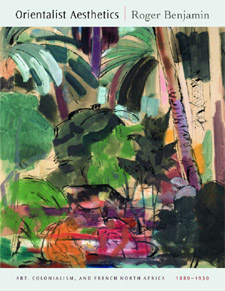 | Title: Orientalist aesthetics: art, colonialism, and French North Africa, 1880-1930 Author: Benjamin, Roger 1957- Published: University of California Press, 2003 Subjects: Art | Art History | French Studies Publisher's Description: Lavishly illustrated with exotic images ranging from Renoir's forgotten Algerian oeuvre to the abstract vision of Matisse's Morocco and beyond, this book is the first history of Orientalist art during the period of high modernism. Roger Benjamin, drawing on a decade of research in untapped archives, introduces many unfamiliar paintings, posters, miniatures, and panoramas and discovers an art movement closely bound to French colonial expansion. Orientalist Aesthetics approaches the visual culture of exoticism by ranging across the decorative arts, colonial museums, traveling scholarships, and art criticism in the Salons of Paris and Algiers. Benjamin's rediscovery of the important Society of French Orientalist Painters provides a critical context for understanding a lush body of work, including that of indigenous Algerian artists never before discussed in English. The painter-critic Eugène Fromentin tackled the unfamiliar atmospheric conditions of the desert, Etienne Dinet sought a more truthful mode of ethnographic painting by converting to Islam, and Mohammed Racim melded the Persian miniature with Western perspective. Benjamin considers armchair Orientalists concocting dreams from studio bric-à-brac, naturalists who spent years living in the oases of the Sahara, and Fauve and Cubist travelers who transposed the discoveries of the Parisian Salons to create decors of indigenous figures and tropical plants. The network that linked these artists with writers and museum curators was influenced by a complex web of tourism, rapid travel across the Mediterranean, and the march of modernity into a colonized culture. Orientalist Aesthetics shows how colonial policy affected aesthetics, how Europeans visualized cultural difference, and how indigenous artists in turn manipulated Western visual languages. [brief] Similar Items |
| 19. | 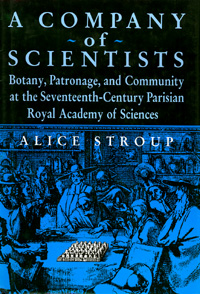 | Title: A company of scientists: botany, patronage, and community at the Seventeenth-century Parisian Royal Academy of Sciences Author: Stroup, Alice Published: University of California Press, 1990 Subjects: History | History and Philosophy of Science | European History Publisher's Description: Who pays for science, and who profits? Historians of science and of France will discover that those were burning questions no less in the seventeenth century than they are today. Alice Stroup takes a new look at one of the earliest and most influential scientific societies, the Académie Royale des Sciences. Blending externalist and internalist approaches, Stroup portrays the Academy in its political and intellectual contexts and also takes us behind the scenes, into the laboratory and into the meetings of a lively, contentious group of investigators.Founded in 1666 under Louis XIV, the Academy had a dual mission: to advance science and to glorify its patron. Creature of the ancien régime as well as of the scientific revolution, it depended for its professional prestige on the goodwill of monarch and ministers. One of the Academy's most ambitious projects was its illustrated encyclopedia of plants. While this work proceeded along old-fashioned descriptive lines, academicians were simultaneously adopting analogical reasoning to investigate the new anatomy and physiology of plants. Efforts to fund and forward competing lines of research were as strenuous then as now. We learn how academicians won or lost favor, and what happened when their research went wrong. Patrons and members shared in a new and different kind of enterprise that may not have resembled the Big Science of today but was nevertheless a genuine "company of scientists." [brief] Similar Items |
| 20. | 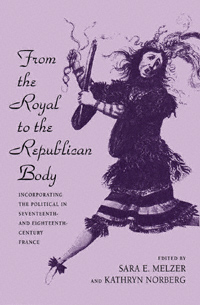 | Title: From the royal to the republican body: incorporating the political in seventeenth- and eighteenth-century France Author: Melzer, Sara E Published: University of California Press, 1998 Subjects: History | European History | French Studies | European Literature | Cinema and Performance Arts | Politics Publisher's Description: In this innovative volume, leading scholars examine the role of the body as a primary site of political signification in seventeenth- and eighteenth-century France. Some essays focus on the sacralization of the king's body through a gendered textual and visual rhetoric. Others show how the monarchy mastered subjects' minds by disciplining the body through dance, music, drama, art, and social rituals. The last essays in the volume focus on the unmaking of the king's body and the substitution of a new, republican body. Throughout, the authors explore how race and gender shaped the body politic under the Bourbons and during the Revolution. This compelling study expands our conception of state power and demonstrates that seemingly apolitical activities like the performing arts, dress and ritual, contribute to the state's hegemony. From the Royal to the Republican Body will be an essential resource for students and scholars of history, literature, music, dance and performance studies, gender studies, art history, and political theory. [brief] Similar Items |